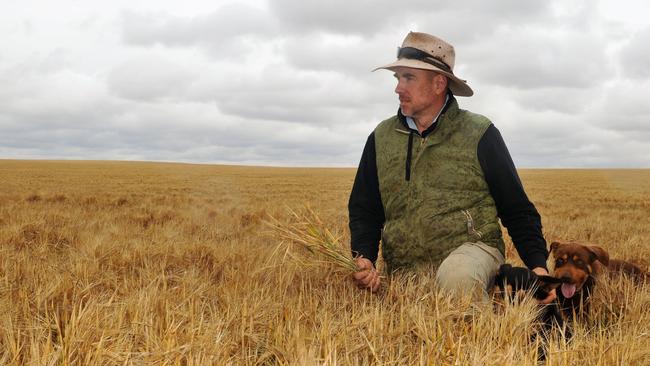Australia’s richest farming regions: Mildura, Toowoomba, Carrathool top the list
Mildura is officially the nation’s most valuable farming region with production receipts of more than $1.1 billion — but where else has made the cut?
Mildura has emerged as the official capital of Australian agriculture.
Figures from the Australian Bureau of Statistics show that total agriculture production in the boundaries of the Mildura Rural City Council was worth a whopping $1.13 billion in 2020-21 – the most of any local government area in Australia.
Mildura is considered a major-yet-diverse food bowl in Victoria with horticulture and cropping the most prominent industries.
According to ABS data, Mildura’s most significant agriculture sector during 2020-21 was fruit and nuts (excluding grapes), which were valued at $422.5 million, with the bulk of those proceeds coming from almonds ($273 million).
A further $324 million was derived from grapes while broadacre crop receipts totalled $250 million. The most-valued broadacre crops in the shire during 2020-21 were wheat ($117.2 million), barley ($86 million) and lentils ($10.9 million).
Of the top 25 shires according to the ABS data, 12 were in Victoria, seven in Queensland, four in NSW and one each in South Australia and Western Australia. Victorian Farmers Federation president Emma Germano said the figures “really demonstrate that Victoria is an agriculture powerhouse”.
Mildura Rural City councillor and Millewa District farmer Ian Arney said while local farmers were benefiting from a good season, particularly for broadacre crops, there were numerous challenges facing the local agriculture industry.
He said reduced markets for tablegrapes and winegrapes — coupled with rising input costs and labour issues — meant local growers were feeling the pinch.
“The next 12 months are not looking too rosy ... there are going to be issues with finding a home for them,” Cr Arney said.
“There’s been a lot of expenditure — certainly in the past few years because markets have been pretty good, but all of a sudden that has been turned on its ear.”
Cr Arney said with outbreaks of varroa mite in parts of NSW meant trying to source enough bee hives to pollinate large-scale almond plantings in the district was also a concern.

On the broadacre crop front, Cr Arney said the season was “fantastic” coming out of winter into the crucial spring.
“There’s some just brilliant crops at the moment but the frosts have dragged a fair bit of moisture out of the crops and out of the ground, so they are looking forward to a good drink,” he said.
“There have been a number of people who have been topdressing and pushing their crops and, honestly, they are shit-hot.”
Mildura MP Ali Cupper said Mildura’s standing as Australia’s richest farming region was out of step with government investment in the local sector.
“That really should give governments pause for consideration of whether we are actually getting our fair share of state infrastructure,” Ms Cupper said.
“We need a new deal for freight — if the Murray Basin Rail project has been complete then we need a new deal. We need a new plan that doesn’t abandon the dream of full standardisation.”
The data showed the second-biggest local government area for agriculture production was Toowoomba in southeast Queensland, with receipts worth almost $1.1 billion. Livestock slaughter including beef ($211.6 million) accounted for the biggest slice of the pie at $384.8 million followed by broadacre crops at $303 million.
Carrathool, in the NSW western Riverina, came in at No.3 with $1.05 billion in agriculture production with broadacre crops ($462 million), fruit and nuts excluding grapes ($206 million) and winegrapes ($90.6 million) the most lucrative industries.
At No.4, Moree Plains in northern NSW cemented itself as Australia’s premier cropping shire with $915 million of its $995.5 million agricultural output coming from broadacre crops. Wheat led the charge with receipts of $412 million followed by barley ($165 million), cotton ($151.9 million) and chickpeas ($108.4 million).
Rounding out the top five placings was Moyne Shire in southwest Victoria with total agriculture receipts of $974.5 million. The bulk of this came from dairy with milk receipts of $410 million, beef at $289 million and lamb at $146.5 million.
Other shires to make the top 10 list included Corangamite in Victoria ($919.6 million), Western Downs ($838.3 million) and Bundaberg ($809.1 million) in Queensland, Esperance in Western Australia ($782.5 million) and Campaspe in Victoria ($778.3 million).





